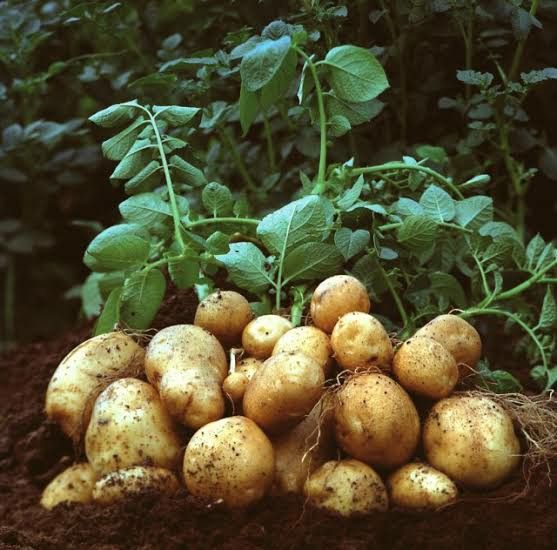Cultivating Excellence: How Agricultural Quality Standards Empower Smart Agriculture
Agricultural Quality Standards sector is undergoing a significant transformation, driven by technological advancements and a growing emphasis on efficiency and sustainability. Smart agriculture, with its integration of data-driven practices and precision tools, stands at the forefront of this revolution. However, ensuring consistent quality remains paramount for agricultural success. This is where agricultural quality standards come into play, acting as a vital bridge between innovation and excellence.
Contents
The Importance of Quality in Smart Agriculture
Smart agriculture thrives on data and automation. Sensors monitor soil conditions, drones map fields, and robots perform tasks with meticulous precision. While these technologies enhance efficiency and resource management, achieving optimal quality hinges on establishing clear and measurable benchmarks. Agricultural quality standards provide a framework for producers to cultivate, harvest, and deliver products that meet specific criteria.
Benefits of Adhering to Quality Standards
- Enhanced Market Access: Standardized products with consistent quality are more readily accepted by domestic and international buyers. This opens up new market opportunities for farmers and creates a more reliable supply chain.
- Consumer Confidence: Consumers increasingly seek transparency and assurance regarding the food they purchase. Adherence to quality standards signifies commitment to safety, hygiene, and responsible agricultural practices, fostering trust and brand recognition.
- Improved Profitability: Standardization helps minimize waste by optimizing production processes and reducing post-harvest losses. This translates to better resource utilization and higher profit margins for producers.
- Traceability and Sustainability: Quality standards often encompass traceability measures, allowing for the tracking of products from farm to fork. This fosters transparency throughout the supply chain and empowers consumers to make informed choices. Additionally, some standards incorporate sustainable practices, promoting environmentally conscious agriculture.
- Standardization as a Common Language: Quality standards establish a universal language for quality across the agricultural sector. This facilitates communication between producers, distributors, and retailers, streamlining transactions and fostering collaboration.
Examples of Agricultural Quality Standards
Several organizations establish and promote agricultural quality standards globally. Here are a few prominent examples:
- The United Nations Economic Commission for Europe (UNECE): UNECE develops internationally recognized standards for various agricultural products, including fresh fruits and vegetables, meat, and eggs. These standards cover aspects like size, appearance, maturity, and freedom from defects.
- The United States Department of Agriculture (USDA): The USDA offers a comprehensive grading system for various agricultural commodities. These grades categorize products based on specific quality factors, allowing buyers to make informed choices based on their needs.
- Global GAP: This internationally recognized private standard addresses various aspects of agricultural production, including food safety, environmental protection, and worker welfare.
Integrating Quality Standards with Smart Agriculture Technologies
The convergence of agricultural quality standards and smart agriculture technologies presents exciting possibilities. Here’s how they can work together:
- Sensor-based Monitoring: Smart sensors continuously monitor factors like soil moisture, temperature, and nutrient levels. This data can be used to adjust agricultural practices in real-time, ensuring optimal conditions for crop growth and adherence to quality standards.
- Precision Application of Resources: Smart irrigation systems and targeted fertilizer application based on sensor data can minimize waste and ensure crops meet specific quality criteria.
- Data-driven Traceability: Smart technologies can facilitate comprehensive data collection throughout the production process. This data can be utilized to track products seamlessly, enhancing transparency and compliance with traceability requirements outlined in quality standards.
- Robotic Sorting and Grading: Automation in harvesting, sorting, and grading can significantly improve efficiency and ensure consistent quality based on pre-defined parameters established by quality standards.
Challenges and Considerations
While the integration of quality standards and smart agriculture offers numerous benefits, some challenges need to be addressed:
- Cost of Implementation: Adopting new technologies can be expensive for small-scale farmers. Government support programs and cost-sharing initiatives can incentivize the adoption of smart technologies and quality standards compliance.
- Standardization and Certification: Navigating the complexities of different standards and certification processes can be overwhelming for some producers. Educational programs and streamlined certification procedures can simplify the process.
- Data Security and Privacy: The extensive data collection inherent in smart agriculture raises concerns about data security and privacy. Robust cybersecurity measures and clear data ownership guidelines are crucial.
Conclusion: Agricultural Quality Standards
Agricultural quality standards play a critical role in ensuring consistent excellence in the era of smart agriculture. By establishing clear benchmarks and facilitating transparency, these standards empower producers to deliver high-quality products that meet market demands and consumer expectations. As smart agriculture technologies continue to evolve, their integration with quality standards has the potential to revolutionize the agricultural sector, paving the way for a future that is not only productive but also ensures consistently high-quality food for a growing global population.




